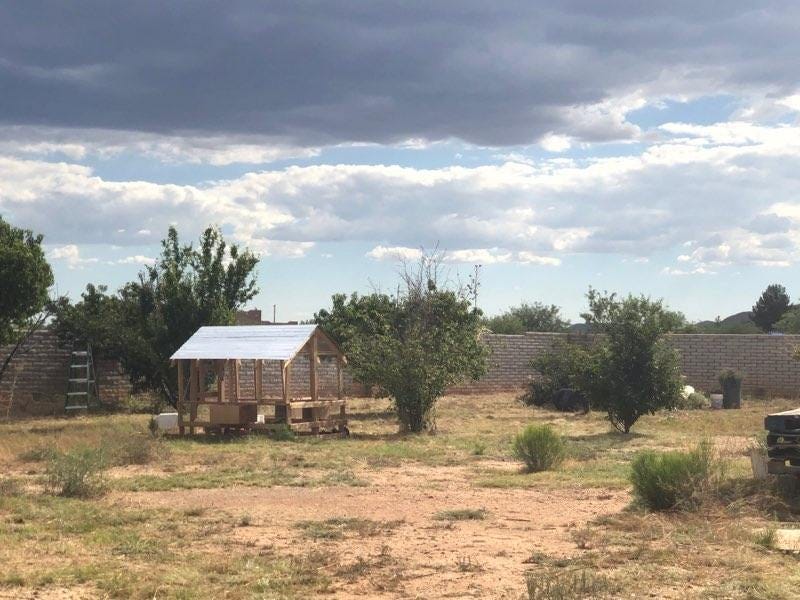Like many terms, as the usage spreads, the actual meaning becomes more and more amorphous. Regenerative agriculture is often confused with sustainable agriculture, ecological agriculture, biointenstive agriculture, and permaculture, and at the end of the day, I suppose the intent matters more than the exact terminology.
So perhaps we should define the word by sharing our intent, rather than our definition. Our goal is to not only keep our land from degrading but to return it to health, beauty, and productivity. Here is an example:
This picture is from May 2019 -

This picture is from May 2020 (same view) -

We’re not done, but you can see how much land has been reclaimed and how much greener this is now. This does several very important things.
It keeps the soil cooler.
Reduces evaporation, so less water does more.
Cooler soil encourages insect and microbial life that breaks down dead and unhealthy growth quickly, returning the micronutrients to the soil.
Creates soil - As green matter appears and breaks down it serves as the constituent ingredient in creating new topsoil.
As new topsoil is generated it continues to cool the ground, providing a home for insect and microbial life and, perhaps most importantly in a desert environment, serves as a sponge to capture and hold water until nearby plants need to use it.
The loss of topsoil is one of the great degradations of America. In some places, up to 18’ (yes, feet, not inches) of topsoil has been compacted or washed away into oceans, rivers, lakes, and particularly the Gulf of Mexico. This creates significant water management issues for an ecosystem, reduces plant production and health, and eliminates a host of crucial nutrients from the landscape, which ultimately reduces the nutrition of the food we eat (a grocery store apple today has less than 40% of the vitamins and minerals of an apple in 1940).

(You can see many of the environmental challenges faced throughout the country in the left column and the benefit of recovering topsoil in the right).
Our goal is to help integrate livestock, plant growth, water cycles, and soil health to not just protect our land, but to improve it significantly, and by doing so produce healthy and properly nutritious food for Cochise County.
We will do this with minimal or no amendments to the soil (this seems like a good idea, but is often like steroids in a human body with an immediate payoff, but long-term consequences). By utilizing grazing herbivores whenever possible we can use the solar power captured by plants to feed our animals, which can then provide food for us.
Additionally, as they consume plant life, their digestive process pulls out what they need. Then, as the digestive process moves south, they return unused micronutrients and the microorganisms of their gut to the soil. Their deposits provide the constituent elements for the next layer of topsoil.

This methodology has already been tested in Australia and Africa, and while it requires more patience than modern agricultural techniques, it provides healthier food and a healthier ecosystem by actually mimicking natural processes.
Next time: Why natural grazing patterns are the key.
*Images taken at Goat Rope Ranch. Infographics from the Savory Institute.
***We still have futures on farm-raised chicken available. Here’s how it works. You shoot us a message on FB or at goatropewhetstone@gmail.com and we will reserve a chicken for you which will be butchered on or about 10 July 2020. You will receive a sealed whole chicken, cleaned, and ready for the pot or the oven! There’s no charge until we deliver and we will base payment ($4/lbs) on the final weight.***


